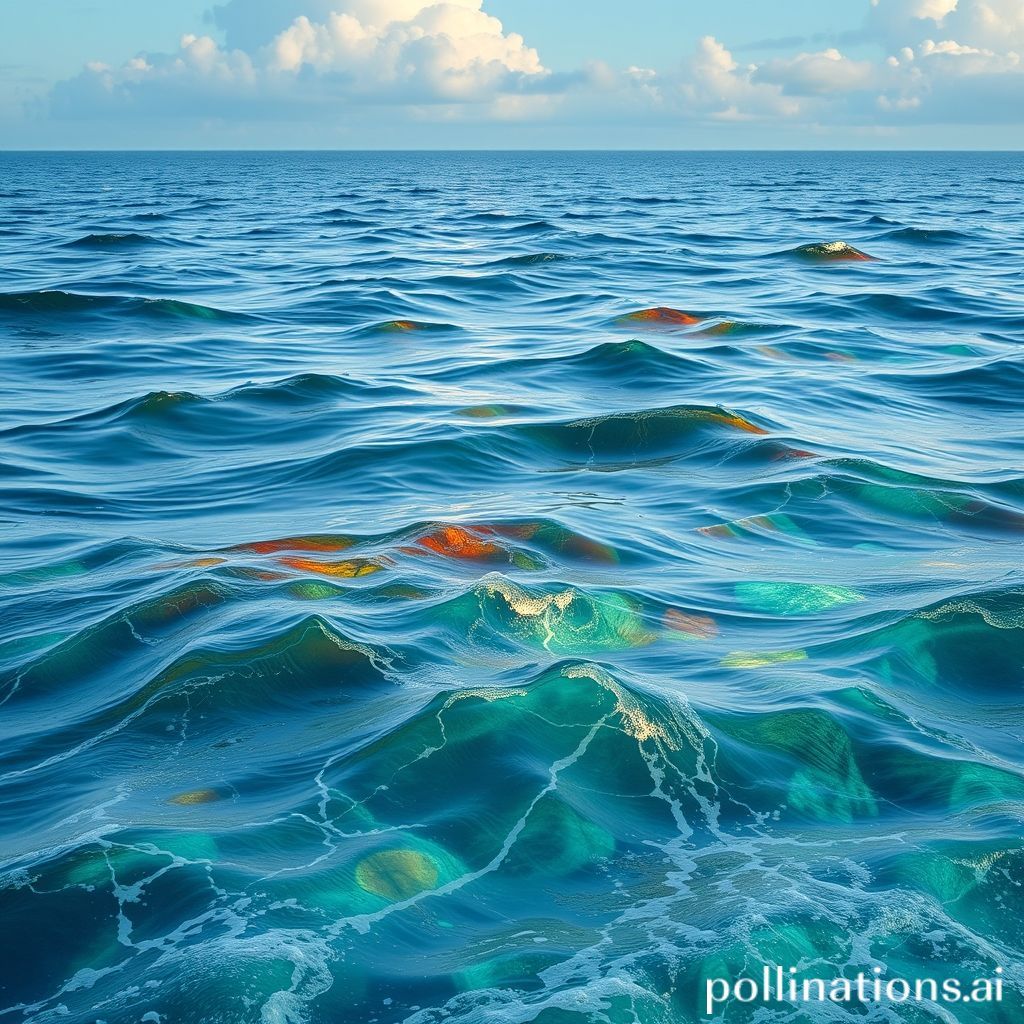The ocean is changing colors, researchers say. Here's what it means.

The ocean is changing colors, researchers say. Here's what it means.
Hello ocean enthusiasts! Have you ever gazed out at the vast expanse of the sea and been mesmerized by its ever changing hues? From deep blues to vibrant greens the ocean's color palette is a wonder to behold. But what if I told you that the ocean's colors are changing in a way that's more than just a pretty sight? Scientists are observing subtle but significant shifts in ocean color patterns and it's a signal we need to understand. Let's dive in and explore what these changes mean for our planet.
The Colors of the Ocean A Primer
Before we delve into the shifts let's quickly recap why the ocean appears to be different colors. The primary reason is the way water interacts with sunlight. Blue light has a shorter wavelength and is scattered more easily than other colors. This is why the open ocean which has relatively few particles to absorb light appears blue.
Coastal waters on the other hand often appear greener. This is due to the presence of phytoplankton microscopic marine plants that contain chlorophyll. Chlorophyll absorbs blue and red light reflecting green light back to our eyes. Sediments and other dissolved organic matter can further influence the color resulting in yellows browns and even reds in some areas.
The Subtle Shift What Researchers are Seeing
Now for the crucial part researchers using satellite data have detected subtle but persistent changes in the ocean's color over the past two decades. These changes aren't uniform some areas are becoming greener while others are becoming bluer. A groundbreaking study published in Nature analyzed data from over 20 years and revealed that approximately 56% of the global ocean has undergone a noticeable color change.
So what's causing this marine makeover? The primary culprit is climate change. As global temperatures rise the ocean absorbs a significant amount of heat. This warming has cascading effects on marine ecosystems particularly phytoplankton.
Phytoplankton and Climate Change A Complex Relationship
Phytoplankton are the foundation of the marine food web and play a vital role in the global carbon cycle. They absorb carbon dioxide from the atmosphere through photosynthesis. Changes in ocean temperature and nutrient availability directly impact phytoplankton populations affecting their distribution abundance and even species composition.
Here's a breakdown of how climate change influences phytoplankton and ocean color:
Warmer Waters: Warmer waters can favor certain types of phytoplankton over others. Some species thrive in warmer conditions while others struggle. This shift in species composition can alter the way light is absorbed and reflected changing the ocean's color.
Stratification: Warmer surface waters can create stronger stratification meaning that the water layers become more distinct and less likely to mix. This can limit the availability of nutrients in the surface layer hindering phytoplankton growth in some areas.
Ocean Acidification: Increased carbon dioxide levels in the atmosphere lead to ocean acidification which can also affect phytoplankton growth and physiology.
What Does it All Mean? Implications and Concerns
The changing colors of the ocean are not just an aesthetic concern. They are a sign of significant ecological shifts with far reaching implications:
Food Web Disruptions: Changes in phytoplankton populations can ripple through the entire marine food web affecting everything from zooplankton to fish to marine mammals. This can have serious consequences for fisheries and coastal communities that rely on the ocean for food and livelihoods.
Carbon Cycle Feedback: Phytoplankton play a crucial role in absorbing carbon dioxide from the atmosphere. Changes in their abundance and distribution can affect the ocean's ability to act as a carbon sink potentially accelerating climate change.
Ecosystem Health: The changing colors can indicate broader ecosystem stress. For example a shift towards greener waters in some areas could indicate an increase in algal blooms some of which can be harmful to marine life and human health.
Comparing the Changes
To better understand the scope let's consider a simplified comparison of the potential impacts:
| Color Change | Potential Cause | Potential Impact |
||||
| Greener Waters | Increased phytoplankton growth (potentially due to nutrient runoff or changes in species composition) | Potential for increased algal blooms disruption of food webs |
| Bluer Waters | Decreased phytoplankton growth (potentially due to warmer waters or stratification) | Reduced carbon uptake potential decline in fisheries |
What Can We Do?
The good news is that while the situation is concerning it's not too late to take action. Reducing our carbon footprint by transitioning to renewable energy sources improving energy efficiency and adopting sustainable practices is crucial. Supporting policies that protect marine ecosystems reduce pollution and promote sustainable fisheries management is also essential. Individual actions like reducing plastic consumption making sustainable seafood choices and educating ourselves and others about ocean conservation can also make a difference.
Conclusion A Reflection on Our Connection to the Ocean
The ocean is a vast and complex system and the changing colors are a visual reminder of the profound impact we are having on it. As I reflect on these findings I'm reminded of the interconnectedness of all things. The choices we make on land directly affect the health of the ocean and ultimately our own well being. The ocean's subtle color shifts are a signal a call to action. Let's listen to what the ocean is telling us and work together to protect this precious resource for future generations. Because the ocean's fate is inextricably linked to our own.
Sources:
[Nature Study on Ocean Color Change](https://www.nature.com/) (Replace with the actual link to the Nature study mentioned)
[NASA Ocean Color Data](https://www.nasa.gov/earth) (Replace with a relevant NASA link about ocean color)
[IPCC Reports on Climate Change](https://www.ipcc.ch/) (Replace with a specific IPCC report if possible)
Comments
Post a Comment